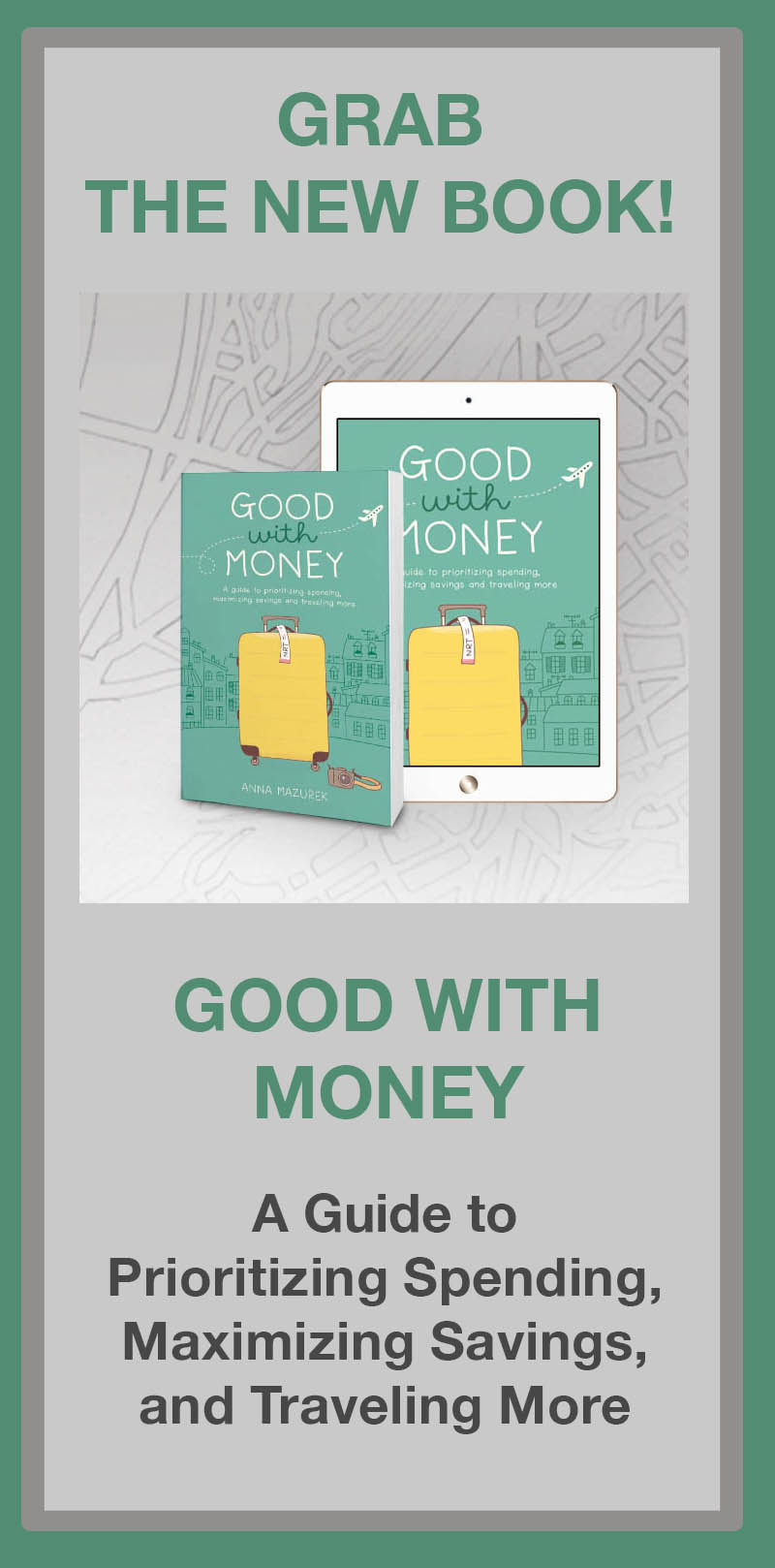Like India, Vietnam can be a sensory overload of beauty and complexity. The scenery is diverse –the mist covered mountains of Sapa, the seemingly endless swarms of motorbikes in Hanoi and the tower limestone pillars of Ha Long Bay. I consider travel to be the best teacher and there’s no better place to get a lesson in world history than this Southeast Asian nation.
I spent the month of January this year traveling slowly through central and southern Vietnam. A few years ago, I ran a photo trip to the north of the country through Sapa, Hanoi and Ha Long Bay. Now that I’ve covered the majority of the country, I figured it was time to write a travel guide!
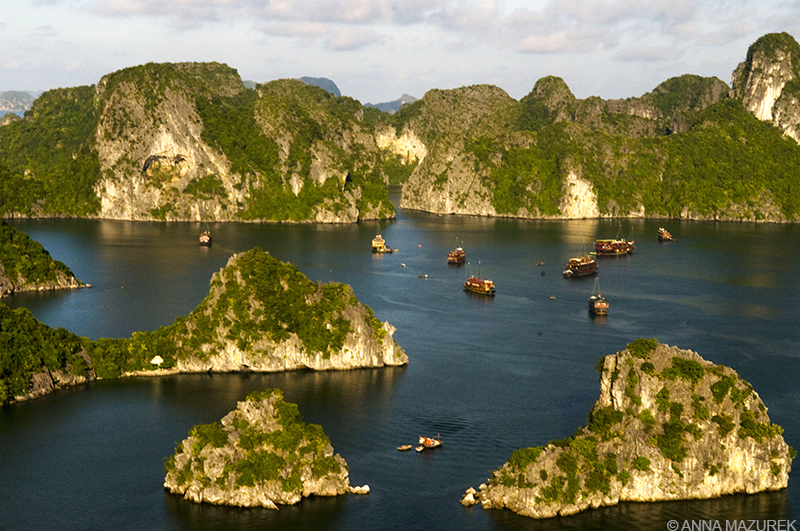
1. Ha Long Bay
Ha Long Bay is one of those places like Machu Picchu that you must visit once in your life. The scenery is postcard perfect: limestone pillars and tiny islands scattered through the Gulf of Tonkin’s emerald waters. It is the number one attraction in Vietnam. The best way to experience the bay is to do a multiple-day cruise on a houseboat to explore the islands, swim and eat year weight in fresh seafood! There are short boat trips and overnight cruises for every budget. I recommend spending a night or two on a houseboat!
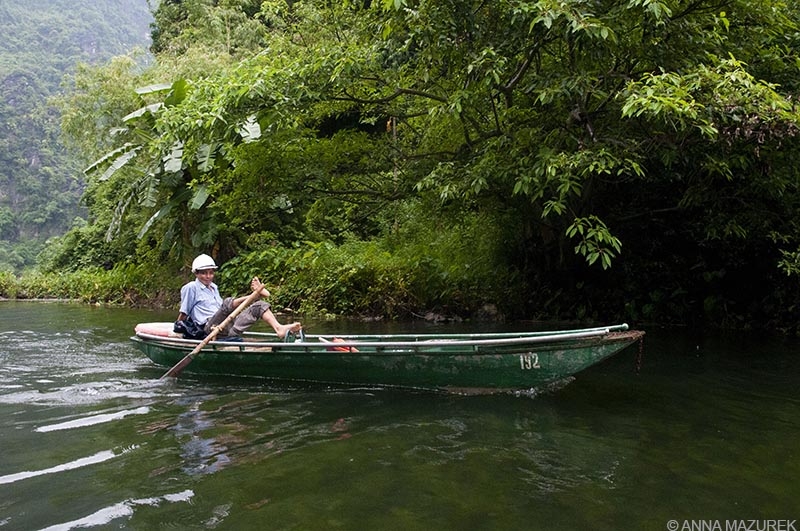
2. Tam Coc
Tam Coc, which means three caves, is the inland version of Ha Long Bay located south of Hanoi near Ninh Binh. The main attraction is a row boat trip through the giant caves underneath the karsts—towering limestone pillars—that dominate the skyline. The caves were unreal! I felt like I was in The Goonies and One-eyed Willie’s ship would be outside the cave. (If you haven’t seen that classic movie, watch it ASAP!) The rowers often use their feet to move the oars. The area is more popular with local tourists, but it was one of my favorite spots in Vietnam! It’s a three hour bus or train ride from Hanoi.
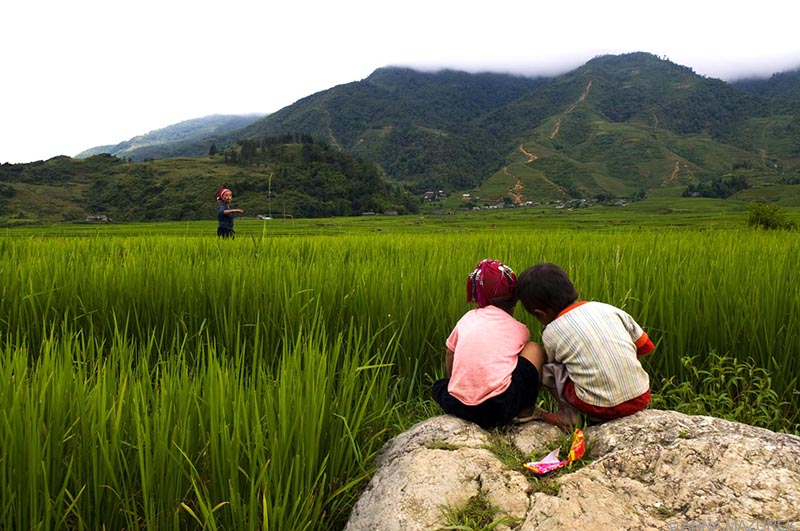
3. Sapa
The former 1922 French hill station is the trekking mecca of Vietnam. The views of the valley from the town are stunning. (The photo above is one of my favorite images I’ve shot in all my years in Asia.) Popular treks include Fansipan, the highest mountain in Vietnam (3143 m); Cat Cat, a village three kilometers south of Sapa; Ta Phin Village, 10 kilometer hike from the city; Sa Seng & Hang Da, a hike along the eastern ridge is great for valley views. Be warned—tourist touts and vendor are relentless in Sapa. (I went to visit a village with a student group and each student had one vendor following them around the village the entire day.) Despite this, the scenery is unreal and worth the trip!
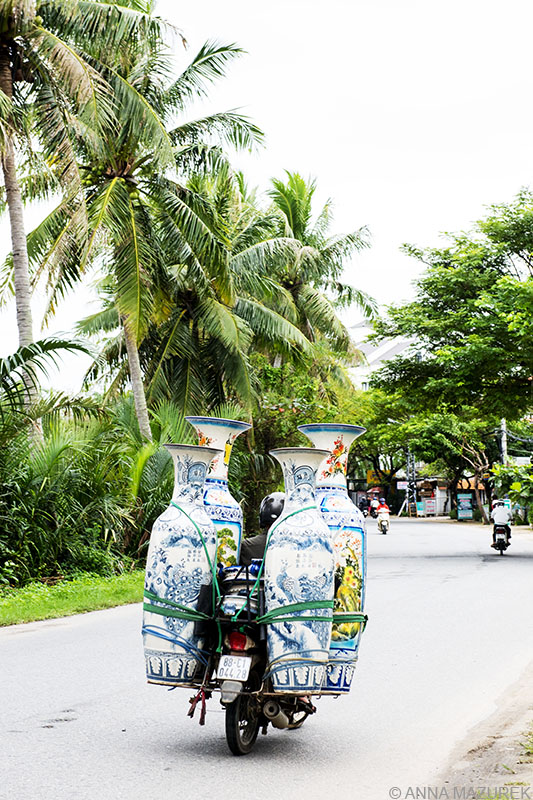
3. Hanoi
Hanoi is both the capital of the country and the chaos. Hoards of motorbikes cover the streets. Find a safe spot on the sidewalk to people watch as the motorbikes defy gravity and logic with their loads which range from refrigerators, to a family of five with a dog and my favorite – dozens of plastic bags filled with water and live goldfish tied to a giant hoop structure on the back of the bike.
Wander the streets of the Old Quarter and the Hoan Kiemshopping district where streets are organized by the goods they sell. (This is really annoying if you need to buy a pen and you’re on the shoe street.) Pho bo (beef noodle shop) is a must for breakfast along with a traditional Vietnamese coffee, which is medium to coarse ground dark roast with a small metal drip filter. You must stop by JOMA, my favorite café in Southeast Asia for breakfast.
Stop by the Ho Chi Minh Museum and if you want to say hello to Uncle Ho, stop by his macellum. Be warned – he’s been preserved and is on full display in typical commniust fashion.
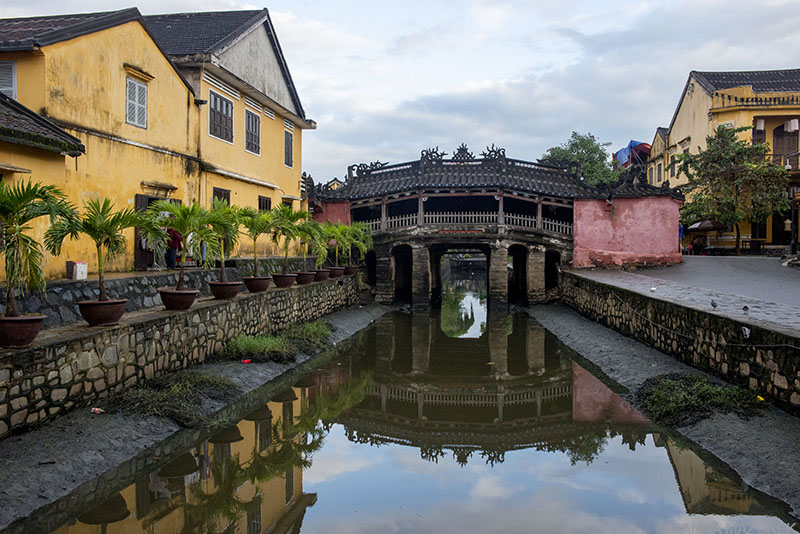
4. Hoi An
Hoi An is my favorite city in Vietnam. The UNESCO site is one of Southeast Asia’s major seaports and reminds me a bit of Charleston—the same quaint historic charm, old colonial buildings and an overload of tourists. As per usual, I got up at sunrise every morning to photograph the city and did the same at sunset. Highlights include the Japanese Covered Bridge, the Assembly Hall of Cantonese Chine Congregation, which has cool dragon carvings, and Assembly Hall of the Fujian Chinese Congregation.
The best Banh Mi spots in town are Banh Mi Queen (I loved the chicken!) and Banh Mi Phuong (Anthony Bourdian loved this spot). Streets Resturant Café had the best Cau Lau I had the whole trip. It’s also a nonprofit the trains underprivdlegd youth to work in culinary and hospitatliy fields.
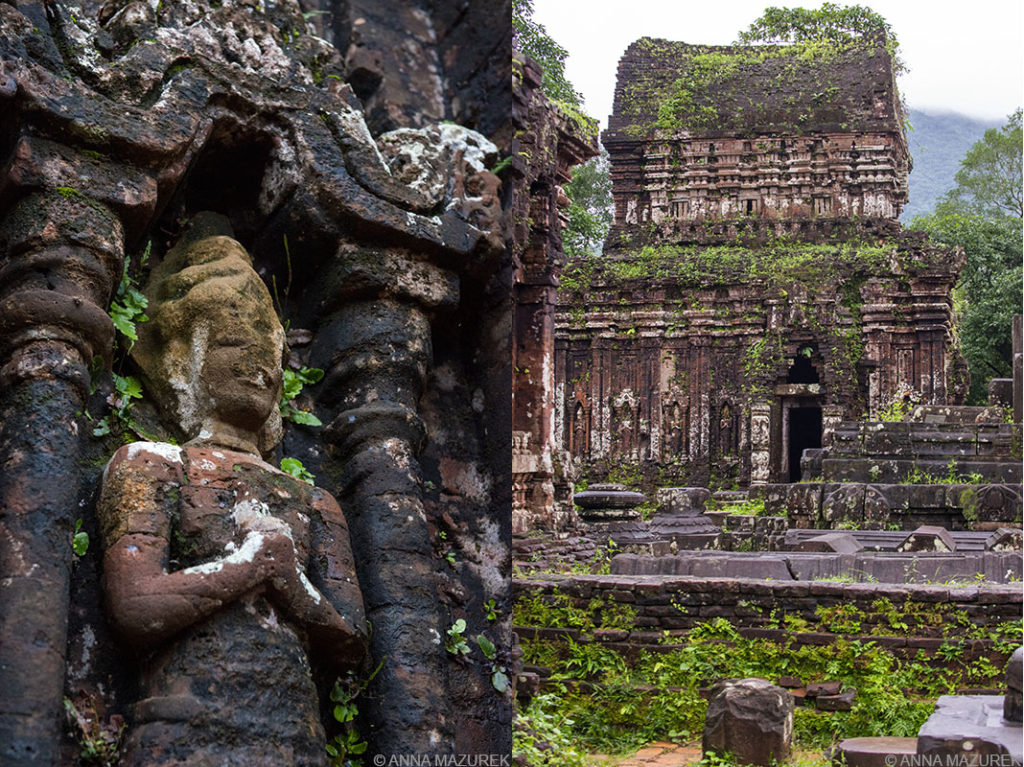
Hoi An is a great hub to do a few day trips including visit the My Son ruins of a Hindu temple complex. (I recommend the sunrise tour.) You can do it on your own if you have a motorbike. I also recommend renting a bicycle and heading over to the coconut village for a boat ride on one of the circular boats. It’s a very touristy thing but such a fun experience. Check out my Instagram story for videos from the trip!
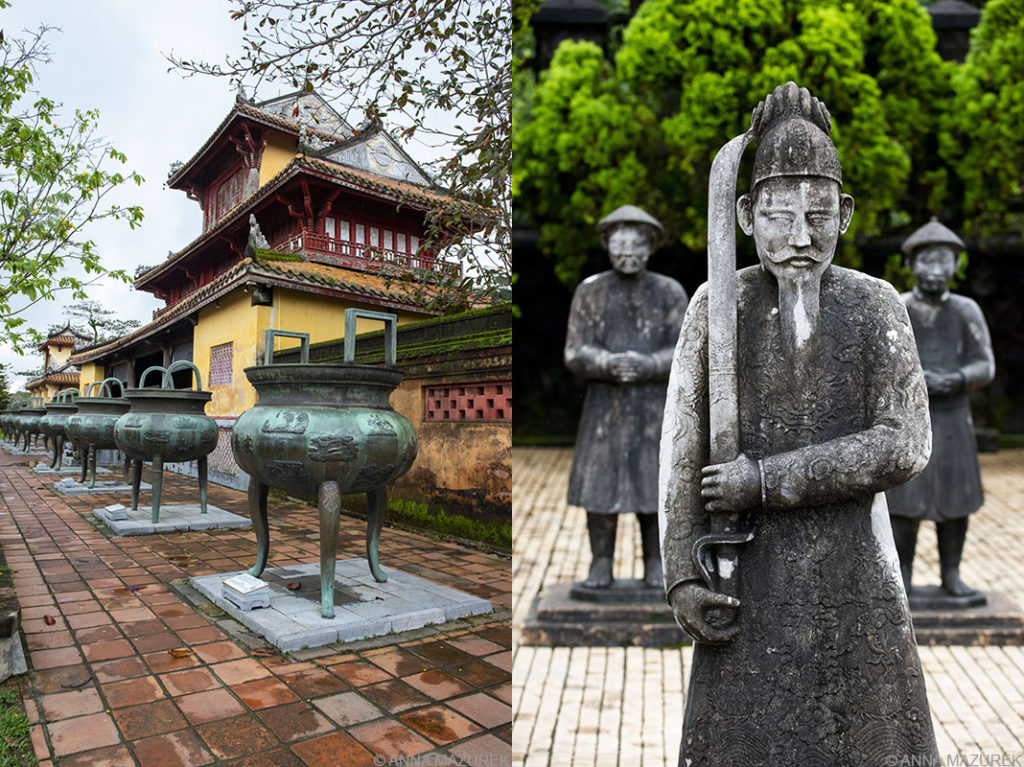
5. Hue
Hue is reminiscent of Angkor Wat in the sense that it’s got a large collection of stunning old ruins. It’s the old imperial capital of the Nguyen emperors that as heavily bombed during the Vietnam War. A visit to the Citadel and the Imperial Enclosure is a must. I spent a good few hours walking around. My favorites spots were the Halls of the Mandarins, Dien Tho residence and the nine dynastic urns at the Mieu Temple Complex.
Outside the city, there are several stunning tombs of the emperors. My friends and I split the cost of a taxi for the day and went to several. Our favorites were the Tomb of Khai Dinh and the Tomb of Tu Doc, which is the most impressive and expansive. Be sure to eat at Bún Bò Huế Bà Xuân. It was recommended to us and was the best spot in town!
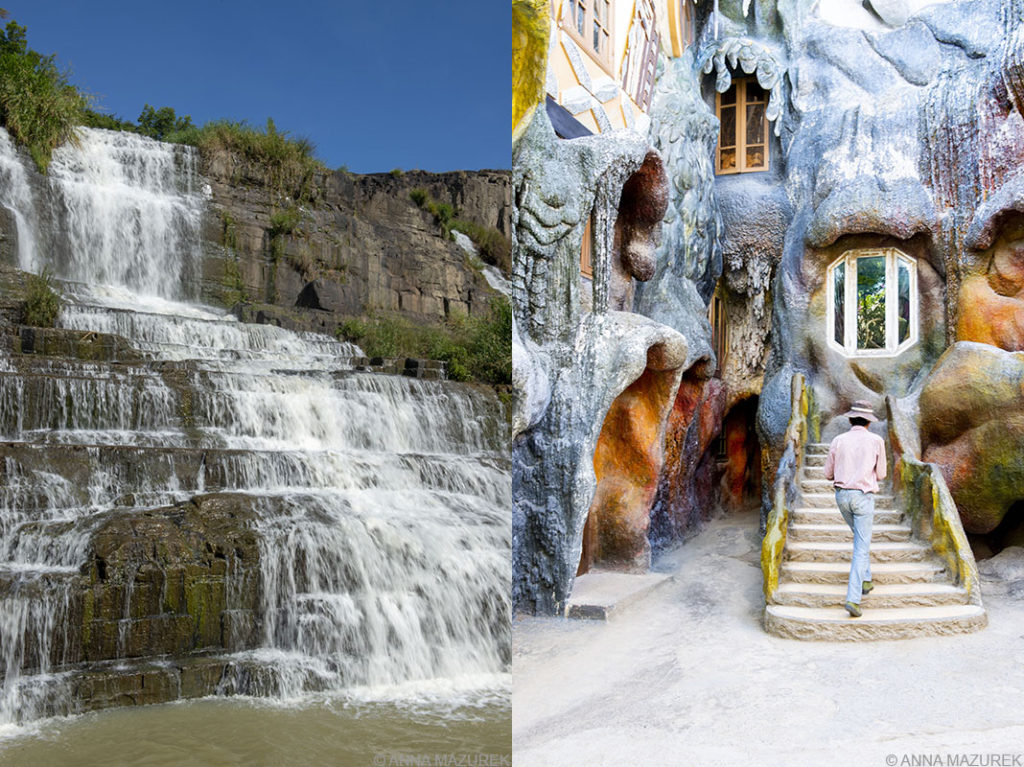
6. Da Lat
Da Lat is the Medellin of Vietnam. The French fled to this mountainous region to escape the heat. It’s now the adventure capital—trekking, canyoning, white water rafting and mountain biking are all options. The vibe is much more laid back than the rest of Vietnam, which I loved. I spent most of my time here visiting waterfalls. My favorite was Pongour, but the roller coaster at Datanla waterfall is a must. (It’s a one-car self controlled system so it’s super fun!) I recommend checking out the Hang Nga Crazy House, which was built by a Vietnamese architech inspired by Gaudi, and the 100 Roofs Bar that resembles the set of a Lord of the Rings movie. An Café is a nice spot for lunch or a quick meal.
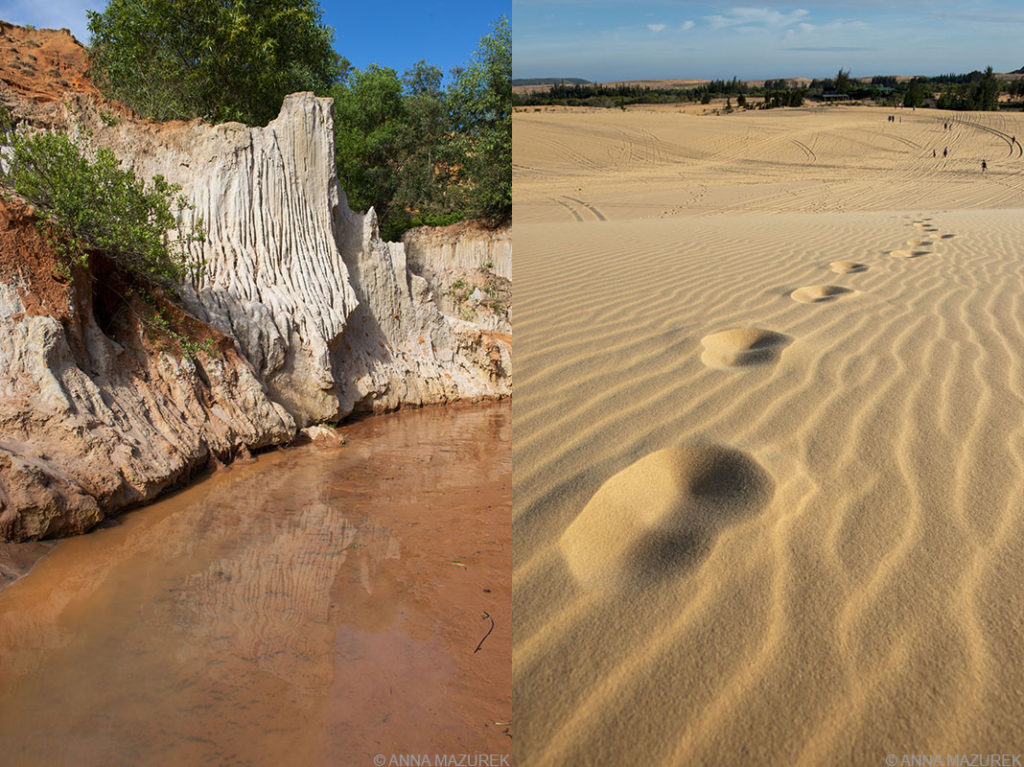
7. Mui Ne
Mui Ne is the kitesurfing capital of Vietnam.The town itself doesn’t have the best beach but the town is close to some cool attractions. For $5, you can take a jeep tour to the red sand dunes near town and white sand dunes (24 km from the town). The tours also take you to Fairy Spring, a stream that flows through some cool rock formations and sand dunes. (It’s easily accessible from town by foot.) The best place to eat in town is a Mediterranean spot called Sindbad and Dong Vui Food Court, an open air food court with independently run stalls that range from German sausages to paella. There’s also loads of Vietnamese options and tons of beer.
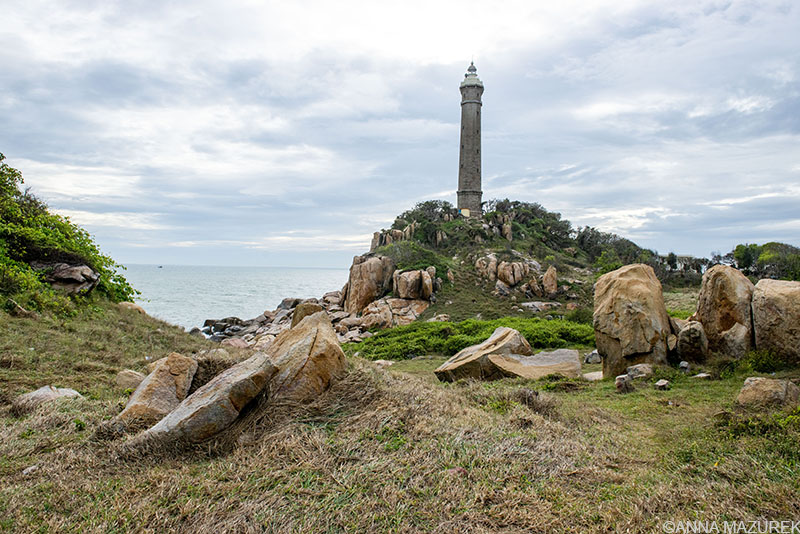
The main reason I went to Mui Ne was to visit the Ke Ga Lighthouse, a remote lighthouse built by the French in 1899 that lies on a rocky islet 300 meters from the coast. I’m obsessed with lighthouses so I had to go. To get to the lighthouse, you need a scooter or a car. Then, you have to take a ferry to the island ($6 USD). I had the island mostly to myself except for a few officials working on the island. For the best photos of the lighthouse, take the dirt paths that lead off to the side and shoot back towards the lighthouse. The lighthouse is right by a fishing village so the sea is lined with boats to the right of the islet, which is also great for photos.
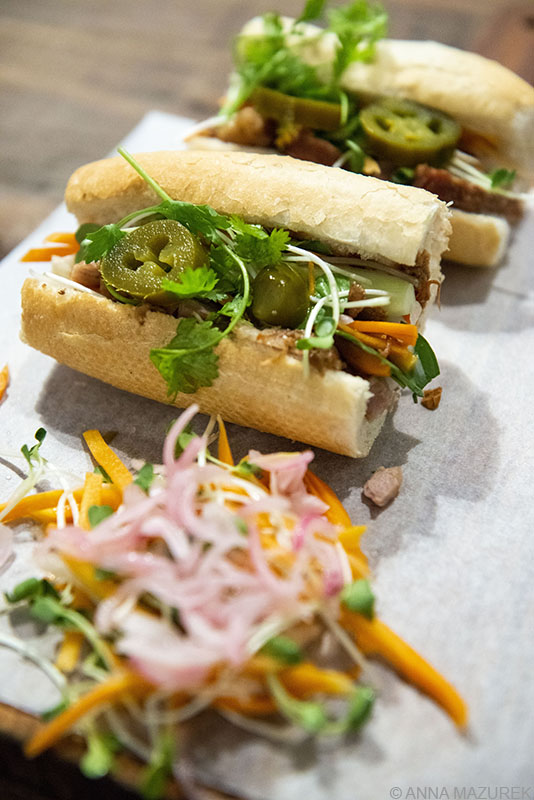
8. Ho Chi Minh City (Siagon)
Ho Chi Minh City (HCMC) is the another epicenter of the motorbike madness. This city is worth a visit for a few days just to witness the chaos and visit the war museum. Surprisingly, HCMC is the craft beer capital of Southeast Asia. My favorite breweries were Pasteur Street Brewing Company (great IPA & tap room) and Winking Seal Beer Company (best dragon fruit beer I’ve ever had). BiaCraft also has good brews and food.
My favorite spots to eat were L’Usine Le Loi, The Vintage Emporium, Journey’s Sandwich Cafe and Banh Mi 3362. ABC Bakery Café was a great spot to grab a fast and cheap breakfast to go!
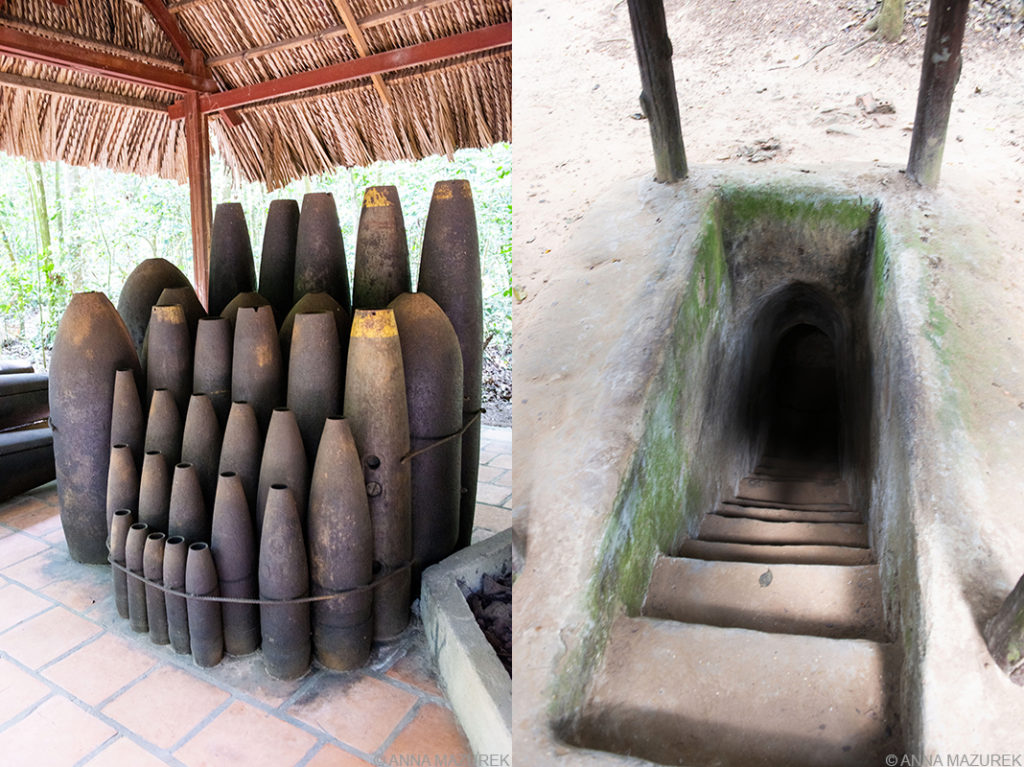
9. Cu Chi Tunnels
Cu Chi is a rural area about 30 to 40 km from Ho Chi Min that’s famous for a legendary spiderweb of tunnels used in the 1960s by the Viet Cong to control the area. There’s two sets of tunnels: Ben Dinh and Ben Duoc. Ben Dinh is the most touristy one because it’s easier for tour buses to reach it. Ben Duoc is the best one in my opinion because it’s not touristy. There was only a handful of people when we went. (We went by public bus from Ho Chi Minh City, which was one of my favorite days in Vietnam. I wrote a post about how to get to the Ben Douc tunnels here.)
I’ve found conflicting sources that state that Ben Dinh was constructed only for tourists and Ben Douc is part of the real tunnel network. I can’t find a reliable source to verify this. Lonely Planet says that Ben Douc was widened for tourists but is less touristy. (There’s a set of stairs leading into the tunnels, which clearly can’t be orginal. Honestly, they probably both were widened at the entrances but they are still tiny.
While it’s easy to find tours to visit Ben Dinh, I recommend taking the public buses (they have air conditioning!) to Ben Douc. Check out this post about how to do it!
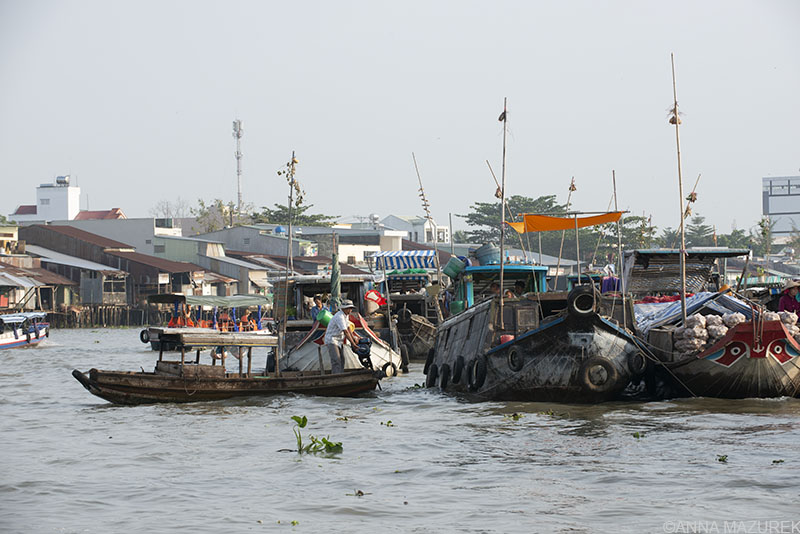
10. Mekong Delta
Can Tho is the main hub in the Mekong Delta that’s filled with large gardens and bustling markets. It’s the jumping off point for visiting the famous Cai Rang Floating Market, the biggest one in the Delta. Vendors tie what they are selling to a pole so you can shop easily. There’s also boats that serve coffee. Tours are available but I recommend showing up at the dock at 5 a.m. to negotiate for your own boat. I went with a friend and we meet three cool Australians who joined us. We paid about $4.30 USD each. One of the highlights was stopping by a fruit orchard. We got to paddle around in little boats in the orchard and sample the fruits. This town is also memorable because it’s how I ended up in a van with a rooster for five hours, which I wrote about here.
What about the caves?
Phong Nha-Ke Bang National Park, a UNESCO site, is filled with hundreds of caves including the world’s biggest cave, Hang Son Doong. (Two of my friends went to Hang Son Doong and loved it. It’s not cheap and you have to book months if not a year in advance.) I was there during the rainy season so I didn’t visit any of the caves. (Water levels are a huge safety issue during the rainy season. ) April to August is the best time to go.
How are the beaches in Vietnam?
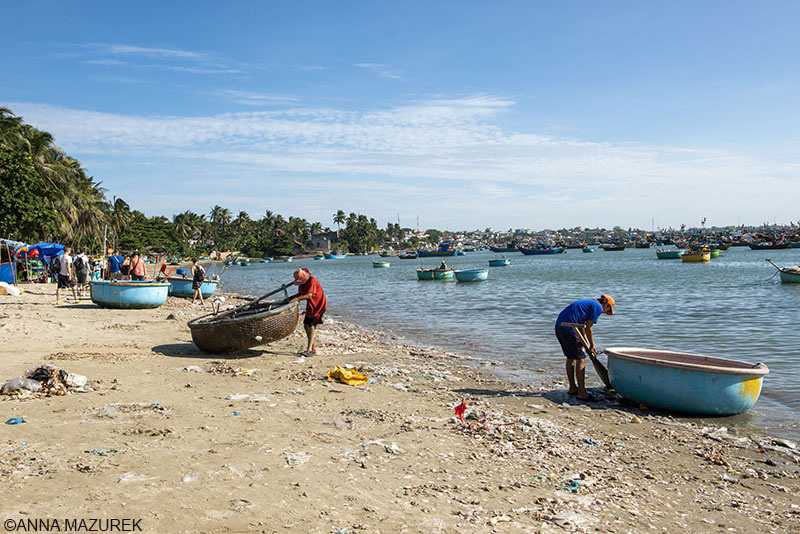
I’m not a fan of the beaches in Vietnam. I’ve been on a quest to find the best beaches in the world, and they aren’t in Vietnam or even Southeast Asia for the matter. To be brutally honest, every beach I went to in Vietnam was polluted. I even went to Phu Quoc island, one of the main attractions. I went to all the prime snorkeling spots and there was trash and beer cans in the coral. This part of the world is notorious for plastic pollution, and I was there at the end of the rainy season, which tends to kick up more of the pollution.
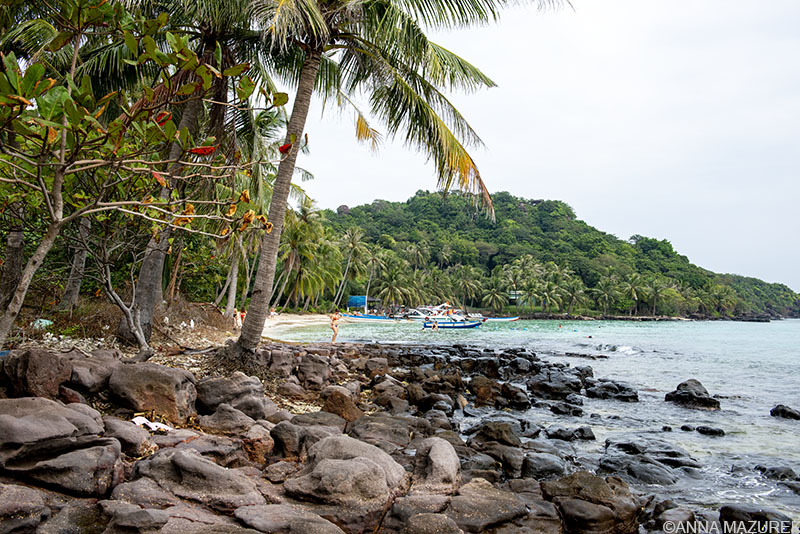
I visited three beaches in Vietnam—Mui Ne, Na Trang and Phu Quoc. They were mostly polluted or overrun with tourists. If you stay at a resort then, it’s nice because they clean the beaches, but the snorkeling will still be polluted. (In my opinion, the best beaches in the world are in the Caribbean. Anguilla and Costa Rica are hard to beat. Maldives (resort islands) and Fiji are nice, too.)
Please be kind to the environment and avoid single-use plastics in this part of the world. Read this post about how to be a better eco-friendly traveler.
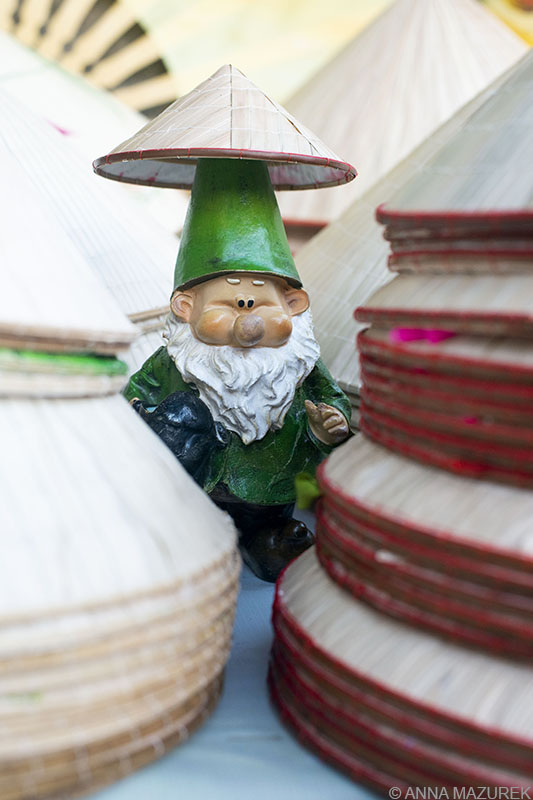
Vietnam 101: Logistics, Costs & Safety
When to Go
Hanoi, Sapa & Northern Vietnam: March – May & September – November
Central Vietnam (Hoi An, Mui Ne, Da Lat): March – September
Ho Chi Minh & South: November to February
July and August are high season. Monsoon rains are common. It’s really cold in Hanoi and northern Vietnam during January so avoid those months especially if you want to swim in Ha Long Bay. Due to climate change, there was a massive cyclone in the Philippines that caused a massive amount of rain in Central Vietnam this January when I started my trip. It was pretty miserable for a week so I don’t recommend going in January.
Cost of Vietnam
I spent a month in Vietnam and spent $991 total. If you look at my Instagram profile, you’ll find a saved story on Vietnam with a detailed breakdown. This includes my $156 flight from Thailand.
Average Transport Costs: overnight buses ($15); overnight trains ($30) and the ferry roundtrip to Phu Quoc was $20.
Accommodation: Hostels cost about $4-9/night.
Food: Street food ranges from $1.40-2/meal. Resturants start at $3 and up. Craft beer is $5 in the big cities.
Splurges: I splurged on a $32 snorkeling trip in Phu Quoc (not worth it), $45 lighthouse tour (Ke Ga Lighthouse – totally amazing) and $50 Ba Na Hills visit (only good if weather is nice).
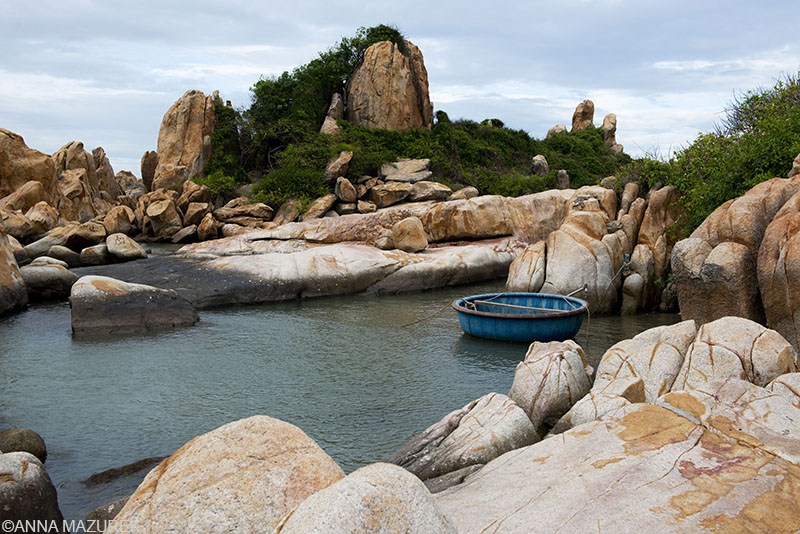
Visas
Americans need a visa before entry into Vietnam. I applied online for a 30 day E-Visa, which was approved really quickly. The normal turnaround time is three days but these are only valid if you arrive at one of their main ports, which is most of the major airports, etc. The cost is $25. Visa-on-arrivals are another option, but I’ve heard the lines can be really long for these. For multiple entry visas, apply for a visa from an embassy prior to your trip. For more details, www.Travel.State.gov.
Safety Warnings
Overall, Vietnam is a really safe place to travel. There’s a lot of scams in Hanoi, Ho Chi Min and Na Trang. I honestly felt like taxi drivers were always trying to scam me. (Never take a street taxi by meter because the meters are often rigged. Agree on a price in advance or take a Grab, a ride share app that’s partially owned by Uber.)
Keep a steady hand on your phone, wallet or purse in the Hanoi and Ho Chi Minh. Thieves on motorbikes are a real concern. I met people who narrowly avoided losing their phones this way. I bought a finger loop for the my phone case so I would have a stronger grip.
There’s still a large amount of unexploded landmines. Be on high alert in rural areas and abide by all signs. For example, My Son ruins had signs warning you to stay on the trails.
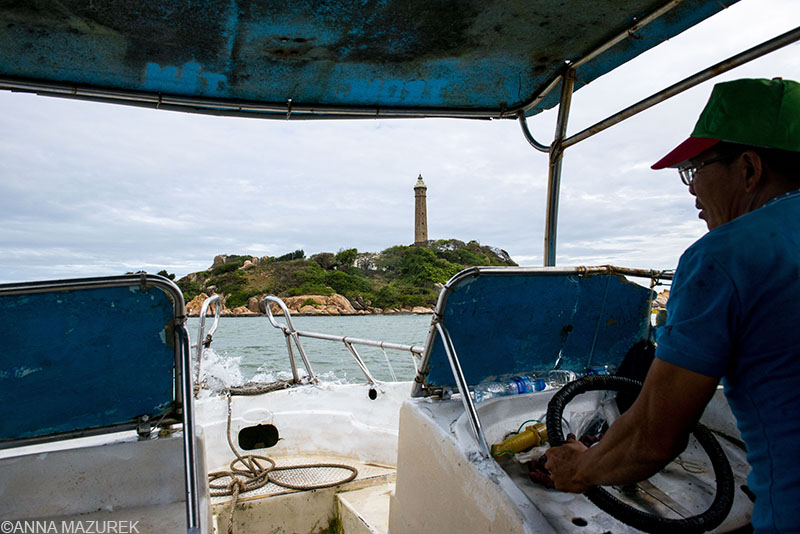
Transit Options
Buses are the cheapest way to travel. Overall, the sleeping buses are fairly nice. You’ve got a lot of space, and they are air conditioned. I suggest a bottom bunk if you have a lot of luggage. (You have to take off your shoes and put them in a bag, which I find annoying when you stop at rest stops. They give you communal flip-flops but that grosses me out.)
Trains are okay but pricier. It was about $30 for me to go from Da Nang to Na Trang. There were definitely roaches in my cabin so take a sleep sack to sleep in! In big cities, I used Grab, a rideshare app that’s partially owned by Uber. The app also offers motorbike taxies, which I used a few times. Helmets are provided.
I took a ferry to Phu Quoc island, which was really nice. It was $20 roundtrip.
Buy tickets for all transit from the station if possible. It’s always cheaper this way.
Domestic flights are fairly cheap but connects through big cities. I traveled by land my entire trip.
Overall, thoughts on Vietnam:
I had a great time on both of my trips. There is some stunning scenery and the food was amazing. I met some great new friends and met up with some old friends. While I wouldn’t live in Vietnam (too chaotic), I’d totally visit again and recommend it. Avoid the beaches during rainy season.
For more about Southeast Asia, check out these posts:
Where to go in Southeast Asia
A Photo Guide to Thailand
How to get to Cu Chi Tunnels by Public Bus in Vietnam
To receive future travel guides, sign up for the email list in the side bar on the right!

